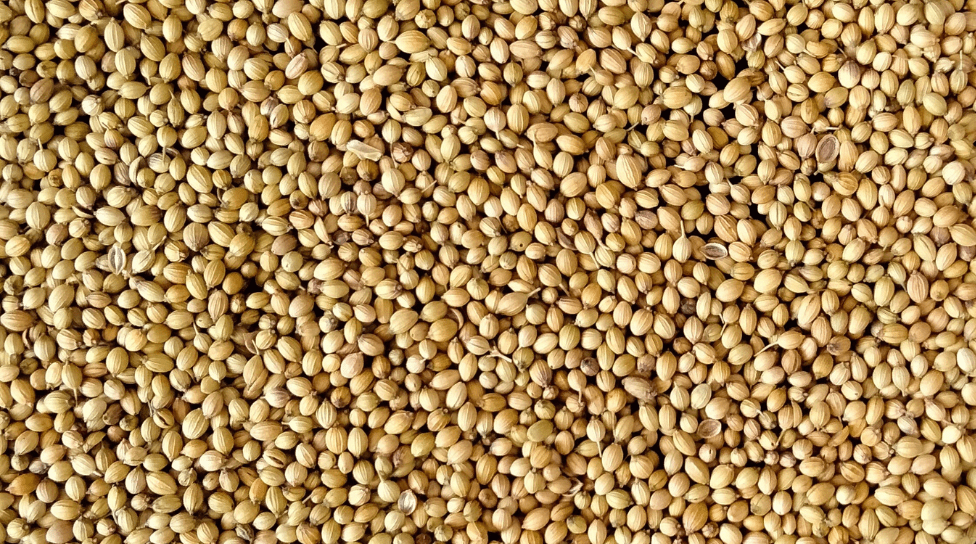Coriander Seeds: Unveiling the Subtle Elegance of Spice
Coriander seeds, the dried fruit of the coriander plant (Coriandrum sativum), are a versatile spice that has been cherished for centuries in cuisines around the globe. With their delicate aroma, citrusy notes, and earthy undertones, coriander seeds add depth and complexity to a wide array of culinary creations. In this culinary exploration, we delve into the nuances of coriander seeds, uncovering their origins, characteristics, culinary uses, and flavor profiles.

Origins and Characteristics
Coriander is native to the Mediterranean region and parts of southwestern Asia. The coriander plant produces delicate, lacy leaves known as cilantro, which are widely used in fresh culinary applications. As the plant matures, it produces small, round seeds that are harvested and dried to create coriander seeds.
Coriander seeds have a golden-brown color and a spherical shape. They possess a subtle yet distinctive aroma, with hints of citrus, floral, and earthy notes. The flavor profile of coriander seeds is complex, offering a delicate balance of sweetness and warmth, with a slightly nutty undertone.
Culinary Uses of Coriander Seeds
Coriander seeds are a fundamental ingredient in cuisines across Asia, the Middle East, Europe, and the Americas. They are a staple in spice blends, marinades, sauces, pickles, and curries, adding depth and character to dishes.
In Indian cuisine, coriander seeds are a key component of garam masala, a fragrant spice blend used in curries, stews, and rice dishes. They are also toasted and ground to create dhania powder, a versatile spice used in various regional cuisines.
In Middle Eastern cuisine, coriander seeds are used to flavor meats, rice dishes, and vegetable preparations. They are often combined with cumin and other spices to create complex spice blends like baharat.
In European cuisine, coriander seeds are used in pickling brines, sausages, bread, and baked goods. They add depth and aroma to dishes like sauerkraut, rye bread, and cured meats.
Flavor Profiles
Coriander seeds exhibit a diverse range of flavor profiles depending on their origin, cultivation methods, and processing techniques. Some coriander seeds may have a more pronounced citrusy aroma, while others may be milder with earthy undertones. The flavor of coriander seeds can be influenced by factors such as soil composition, climate, and harvesting methods.
Coriander seeds from certain regions, such as Morocco and India, may have a more intense and robust flavor, while seeds from other regions may be more subtle and delicate. The versatility of coriander seeds allows them to complement a wide variety of ingredients and cooking styles, making them a prized addition to spice racks worldwide.
Culinary Tips for coriander seeds
To maximize the flavor of coriander seeds, consider the following culinary tips:
Toasting: Toasting coriander seeds in a dry skillet over medium heat can enhance their aroma and flavor. Toast them until they become fragrant and lightly browned, then grind them for use in recipes.
Grinding: Grinding coriander seeds just before use can help preserve their freshness and potency. Use a spice grinder or mortar and pestle to grind the seeds to the desired consistency, whether coarse or fine.
Storage: Store coriander seeds in an airtight container in a cool, dry place away from direct sunlight. Proper storage can help maintain their flavor and aroma for an extended period.
Conclusion
Coriander seeds, with their subtle elegance and versatile flavor profiles, are a treasure trove of culinary inspiration. From fragrant curries to savory pickles, these humble seeds elevate dishes with their nuanced aroma and complex taste. Embrace the culinary journey of coriander seeds and discover the countless possibilities they offer in the realm of gastronomy.
